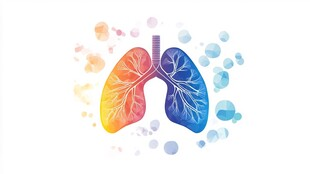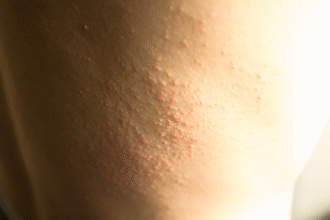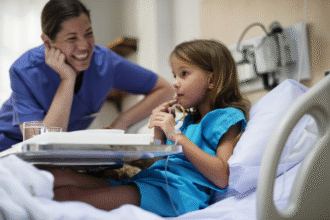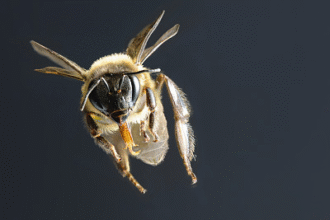Pulmonary Tuberculosis (TB)
Pulmonary TB is a contagious lung infection caused by Mycobacterium tuberculosis (MTB). It can involve other organs (extrapulmonary TB), but lung disease drives transmission.
The Organism (brief)
- Acid‑fast bacillus with a lipid‑rich cell wall (mycolic acids); slow‑growing, obligate aerobe.
- Typical size ~0.2–0.6 μm wide and 1–4 μm long; visualized by Ziehl‑Neelsen or auramine‑rhodamine staining.
- Virulence factors include “cord factor” (trehalose dimycolate) and complex lipids that help resist host defenses.
How TB Spreads
- Airborne transmission via droplet nuclei from people with infectious pulmonary or laryngeal TB, especially during coughing, singing, or speaking in poorly ventilated spaces.
- Risk rises with close, prolonged contact, crowding, and inadequate ventilation. Household contacts are at highest risk.
Symptoms and Red Flags
- Cough ≥2–3 weeks, sputum or hemoptysis, chest pain.
- Systemic: fever, night sweats, weight loss, fatigue, anorexia.
- Red flags: coughing blood, respiratory distress, altered mental status, severe chest pain — seek urgent care.
Who Is at Higher Risk?
- People with HIV or other immunosuppression (e.g., steroids, chemotherapy, anti‑TNF therapy).
- Close contacts of infectious TB cases; residents and staff of congregate settings; people experiencing homelessness or incarceration.
- Diabetes, silicosis, chronic kidney disease, malnutrition, alcohol/substance use disorders; children <5 years; older adults; smokers.
Diagnosis
- Sputum testing: smear microscopy for acid‑fast bacilli; nucleic acid amplification tests (e.g., Xpert MTB/RIF) for rapid detection and rifampin resistance screening; culture is the gold standard and enables full drug‑susceptibility testing.
- Imaging: chest radiograph (infiltrates, cavities, hilar/mediastinal adenopathy); CT for complications when needed.
- Tests for latent TB infection (LTBI): IGRA (interferon‑gamma release assays) or tuberculin skin test (TST); positive results indicate infection but not active disease.
- Always rule out active TB before treating LTBI.
Treatment — Drug‑Susceptible Pulmonary TB
- Standard regimen: 2 months of isoniazid (H) + rifampin (R) + pyrazinamide (Z) + ethambutol (E), followed by 4 months of H + R. Weight‑based dosing; adjust per guidelines.
- Give pyridoxine (vitamin B6) with isoniazid to reduce neuropathy risk.
- Monitor for hepatotoxicity (H, R, Z) and optic neuritis (E). Check drug–drug interactions with rifamycins.
- Adherence is critical; directly observed therapy (DOT) or digital adherence support is recommended.
- Many patients become far less infectious after ~2 weeks of effective therapy with clinical improvement, but follow local policies for isolation clearance.
Drug‑Resistant TB (MDR/RR‑TB)
- If rifampin resistance or MDR‑TB is suspected/confirmed, refer to specialized programs. Regimens commonly include newer agents (e.g., bedaquiline, linezolid; some settings use pretomanid‑based combinations) and last 6–20+ months per protocol.
Infection Control and Public Health
- Airborne precautions for suspected/confirmed cases; use fit‑tested respirators and airborne infection isolation rooms in healthcare settings.
- Ensure adequate ventilation and avoid crowded spaces during the infectious period.
- Report cases to public health; conduct contact tracing to evaluate and treat exposed persons.
Preventing TB
- BCG vaccination at birth in high‑burden countries helps prevent severe TB in young children (e.g., miliary TB, TB meningitis), though protection against adult pulmonary TB is variable.
- Test and treat latent TB infection in high‑risk groups: options include 3HP (once‑weekly isoniazid + rifapentine for 3 months), 4R (daily rifampin for 4 months), 3HR (daily isoniazid + rifampin for 3 months), or 6–9H (daily isoniazid for 6–9 months). Choose based on age, comorbidities, drug interactions, and local guidance.
- Improve ventilation, reduce crowding, optimize nutrition, and provide HIV testing and linkage to care; offer TB preventive therapy to people living with HIV.
Takeaways
- Think TB in anyone with a persistent cough, weight loss, fevers, and risk factors.
- Confirm with microbiology; start guideline‑based therapy promptly and support adherence.
- Control spread with airborne precautions, contact tracing, and LTBI treatment in exposed contacts.
Educational information only; follow local guidelines and consult TB specialists/public health authorities for case management.







